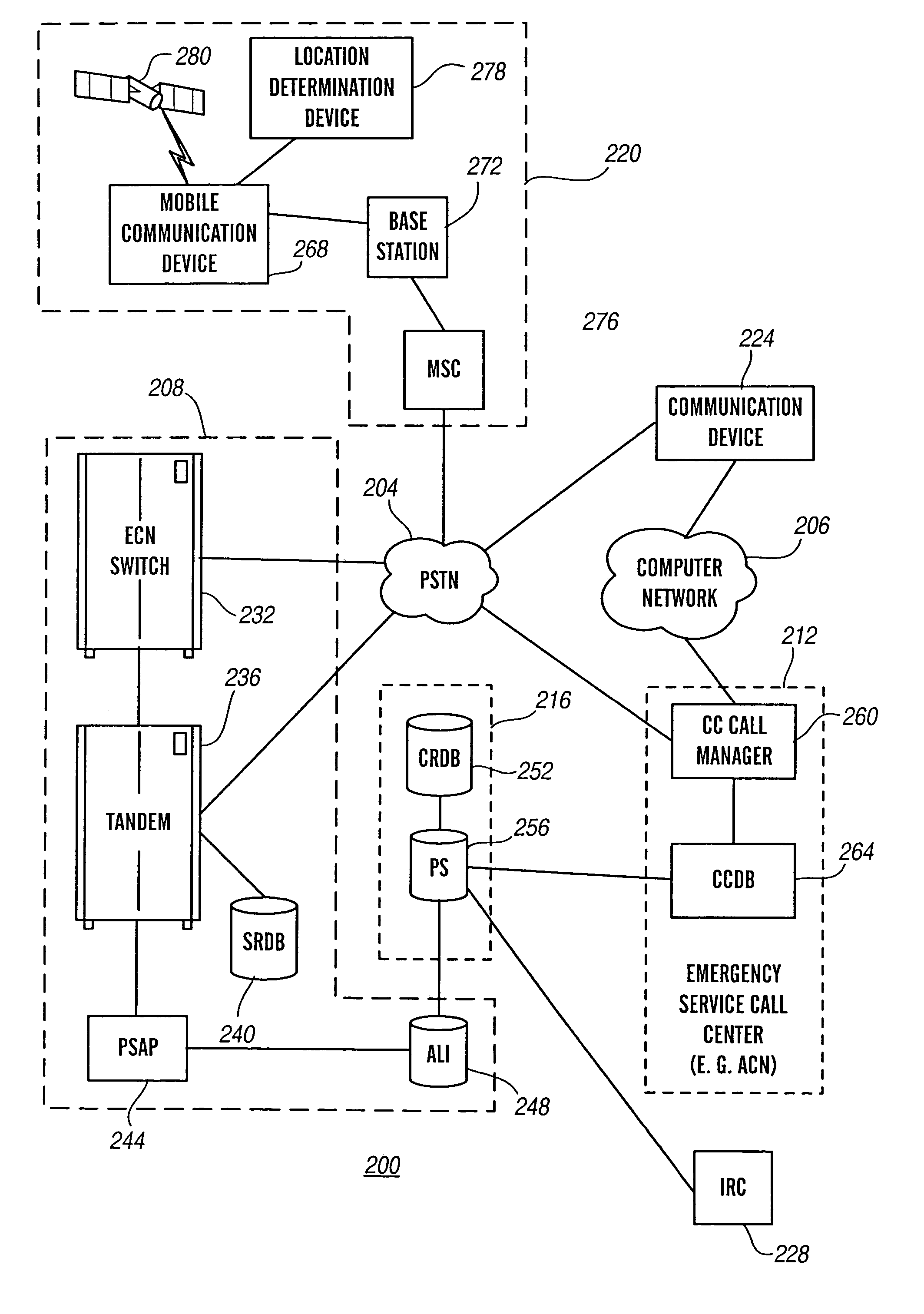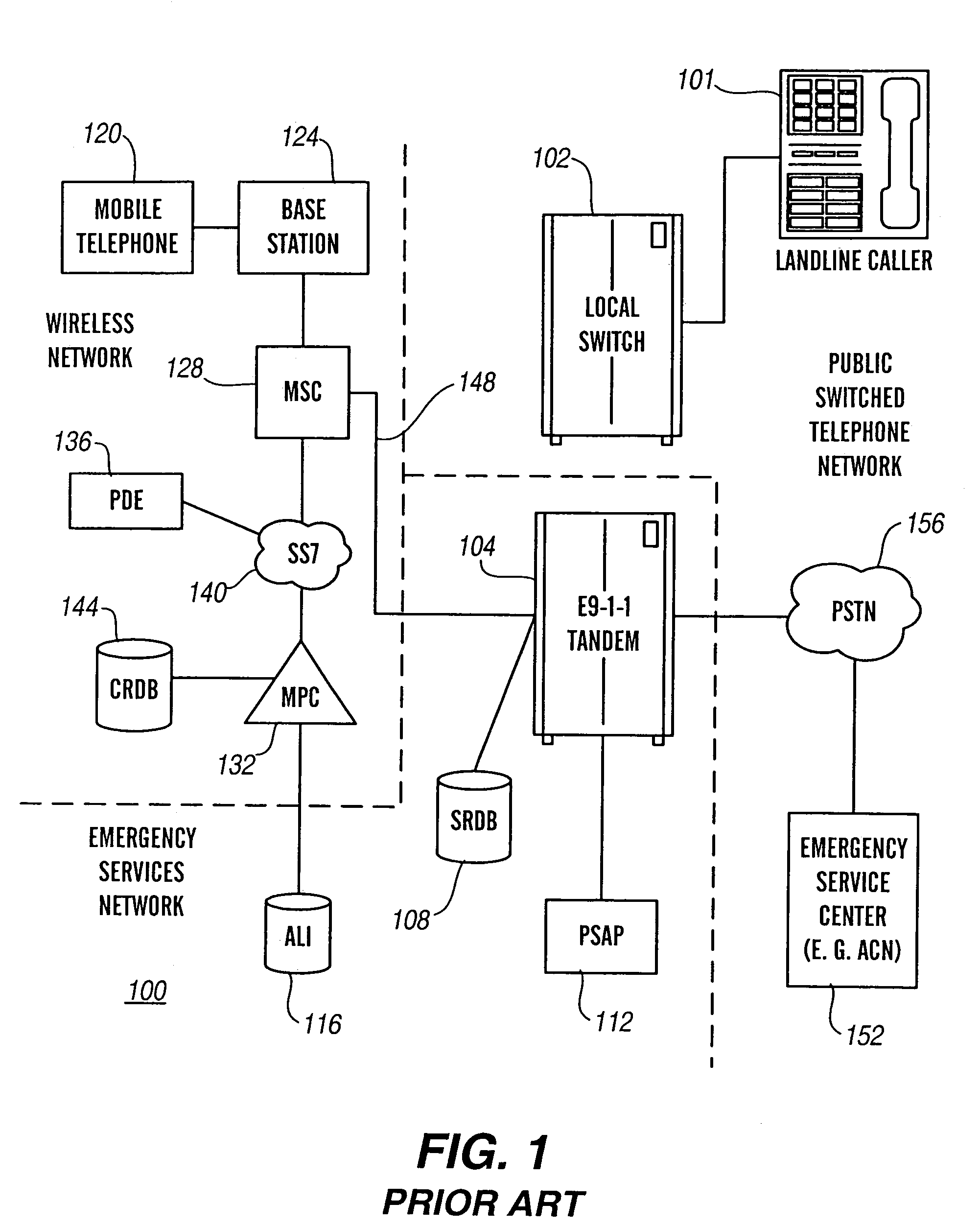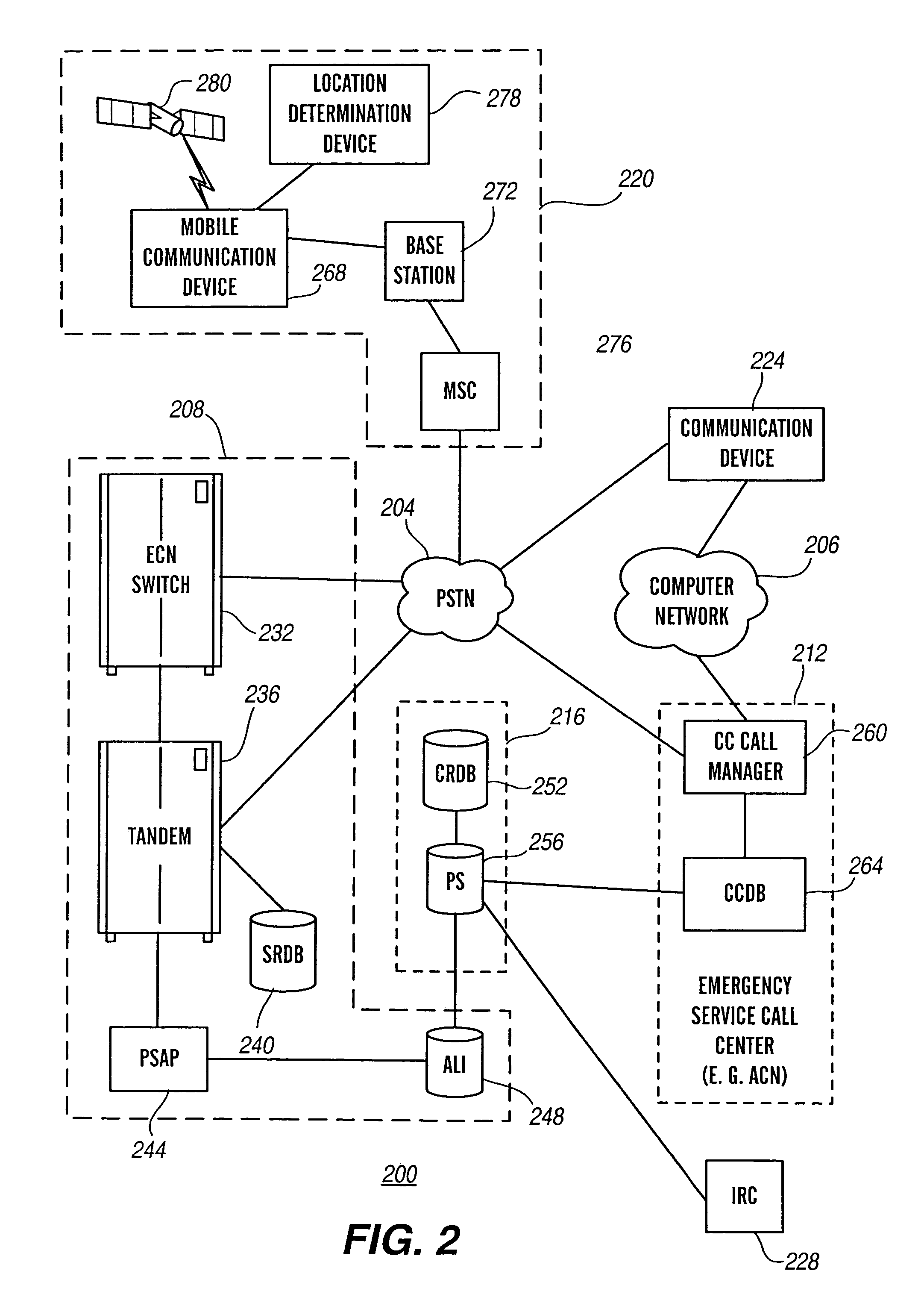Geographic routing of emergency service call center emergency calls
- Summary
- Abstract
- Description
- Claims
- Application Information
AI Technical Summary
Benefits of technology
Problems solved by technology
Method used
Image
Examples
Embodiment Construction
[0027]The present invention relates to the routing of calls or requests for emergency services received at an emergency service call center to an appropriate public safety answering point across the public switched telephone network as native emergency calls. In addition, the present invention relates to the provision of caller information in connection with emergency calls that are placed to an emergency service call center and routed to a public safety answering point over the public switched telephone network.
[0028]With reference now to FIG. 1, in a prior art system 100, 9-1-1 calls placed from a wireline telephone 101 are routed by a local switch 102 and delivered within a specific geographic area, and in particular within the serving area for an E9-1-1 tandem 104. Routing is done based on static tables that correlate a street address associated with the telephone 101 to an emergency service number (ESN) that translates to a specific PSAP. In particular, a house or other static ...
PUM
 Login to View More
Login to View More Abstract
Description
Claims
Application Information
 Login to View More
Login to View More - R&D
- Intellectual Property
- Life Sciences
- Materials
- Tech Scout
- Unparalleled Data Quality
- Higher Quality Content
- 60% Fewer Hallucinations
Browse by: Latest US Patents, China's latest patents, Technical Efficacy Thesaurus, Application Domain, Technology Topic, Popular Technical Reports.
© 2025 PatSnap. All rights reserved.Legal|Privacy policy|Modern Slavery Act Transparency Statement|Sitemap|About US| Contact US: help@patsnap.com



